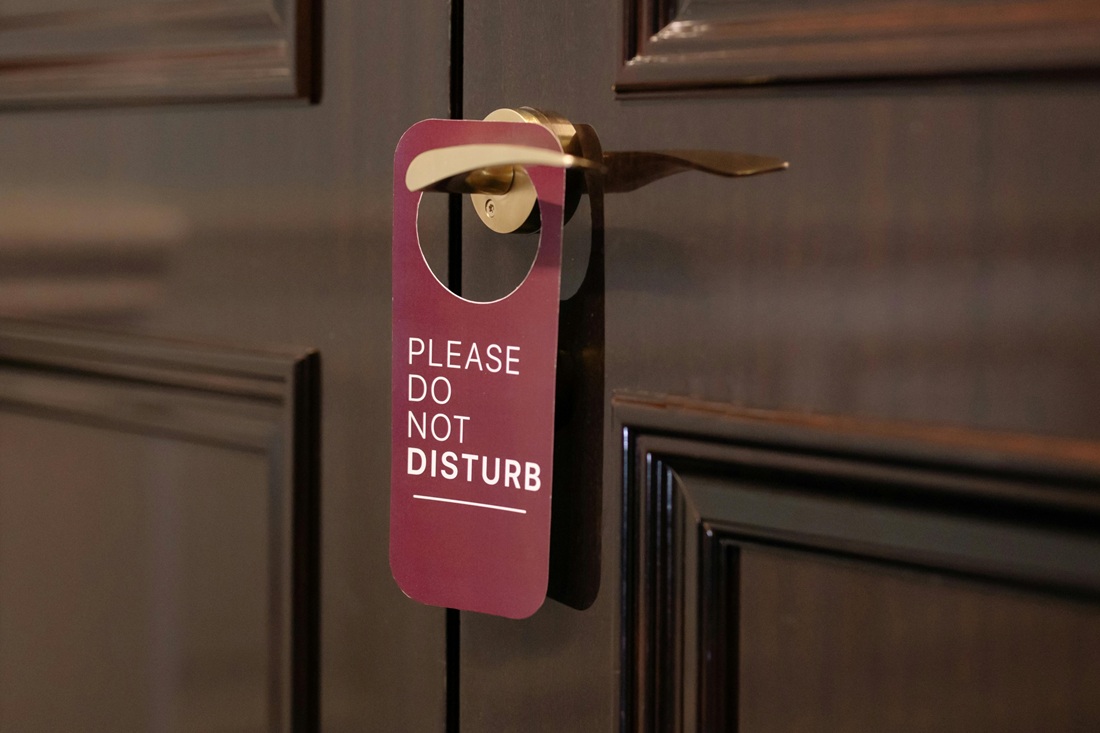What Is an Office?
An office is a designated workspace where individuals or teams carry out tasks for an organisation. Over time, the appearance of offices has changed, but their key function of providing an environment for productivity, collaboration and focus has remained.
Initially, it might seem like a simple or even redundant question because everyone should know what an office is. Yet in our experience, and with so many modern variations, we find that some people are unsure. This article will clear up any confusion and provide you with everything you need to know.
Office vs Office Space: Is There a Difference?
Yes, there is a difference between an “office” and an “office space”.
• Office – This refers to any place where work happens, from a spare bedroom to a desk on a patio. Home and garden offices are perfect examples, as they are places where staff can work from.
• Office Space – This refers to specifically designed rooms, buildings, or floors created for office use.
The terms are often used interchangeably, but knowing the difference when you’re looking to rent an office is helpful.
Office space is always found in a commercial building, like a business centre or a mixed-use property. However, as an office is anywhere work can be done, this can be found within a residential building.
Ensuring you understand the difference can help you know exactly the type of environment you’re renting, whether a professionally managed commercial space or simply a functioning office.
The Purpose of an Office
The purpose of an office is to enable work. However, it is also about creating an environment where staff are productive.
Offices serve as a central hub for communication both internally and externally. Whether for team meetings or client presentations, a physical office space can speed up decision-making and streamline operations. We have found that many businesses rent offices to establish structure and routine, which can be helpful for fast-paced industries.

Offices also play a role in defining a company's identity. An office's layout and location can help reinforce an organisation’s culture. A creative agency may opt for an open-plan layout, while finance companies may prefer a private floor with dedicated amenities.
The History & Evolution of Offices
Due to changes in technology, work culture and employee expectations, the concept of the office has evolved significantly. Some of the first offices were rigid and hierarchical, and when compared to modern workspaces, offered less flexibility and space for collaboration.
Here is a quick timeline we’ve put together to highlight the key milestones in the evolution of the office:
1700s-1800s – Early office spaces were developed in financial institutions and government buildings. They were designed for administrative tasks and laid out so managers could easily supervise their staff.
1900s-1950s – With the rise of typewriters and filing systems, there was an increased demand for large, grid-style layouts.
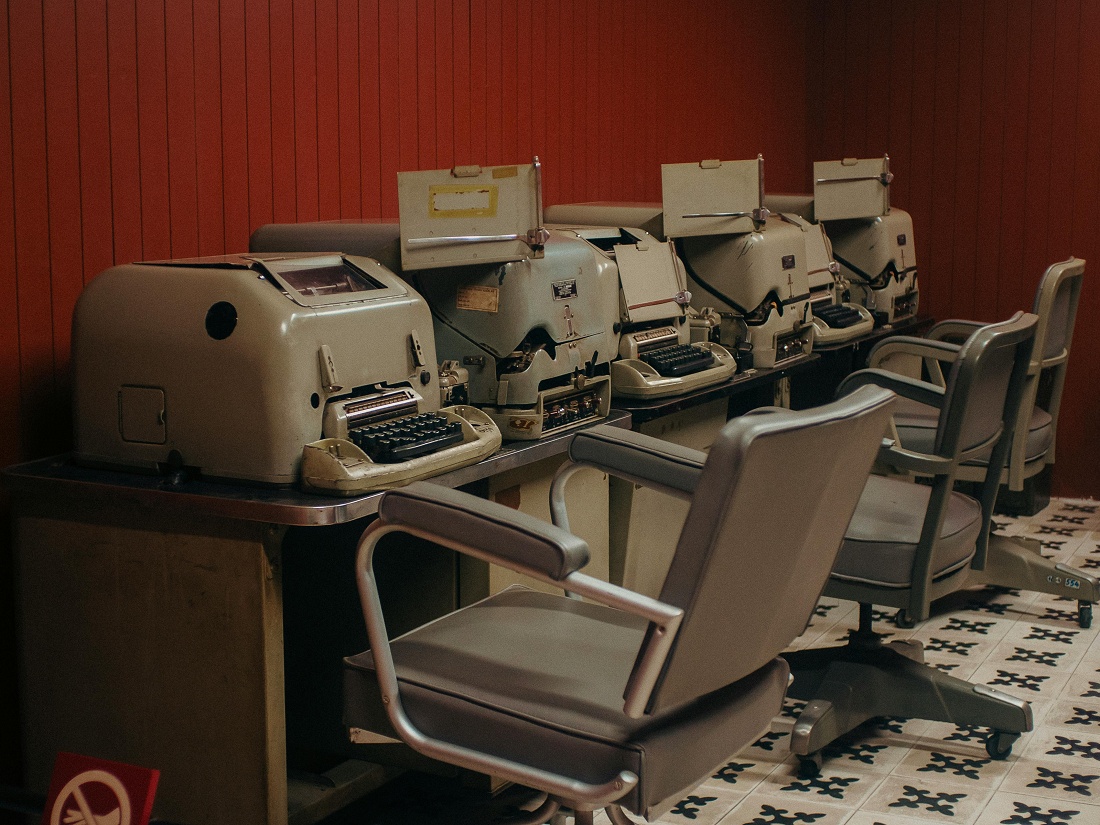
1980s – The first ideas of coworking spaces started to emerge to cater to those who travelled for work.
1990s-2000s – Open-plan offices became more popular as companies focused on collaboration.
2010s – As technology developed, remote work was possible, allowing for flexible working.
2020s – The COVID-19 pandemic caused a surge in remote working and drove the demand for flexible office space, like serviced and managed workspaces.

Nowadays, offices are not just a place for employees to work, they are a way of promoting brand identity, boosting collaboration and idea-sharing.
Different Types of Offices
Traditional Leased Spaces
These offices are generally rented long-term, and the tenant manages the setup and running of the office.
Serviced Offices
These are fully furnished offices managed by a provider, including internet, utilities, and all setup costs.
Managed Offices
Similar to serviced, managed offices are run by a provider. However, the floorplates can be fully customised to include dedicated facilities such as breakout spaces and meeting rooms.
Coworking Spaces
Coworking spaces are shared office environments where different companies can rent desks by the day or month.
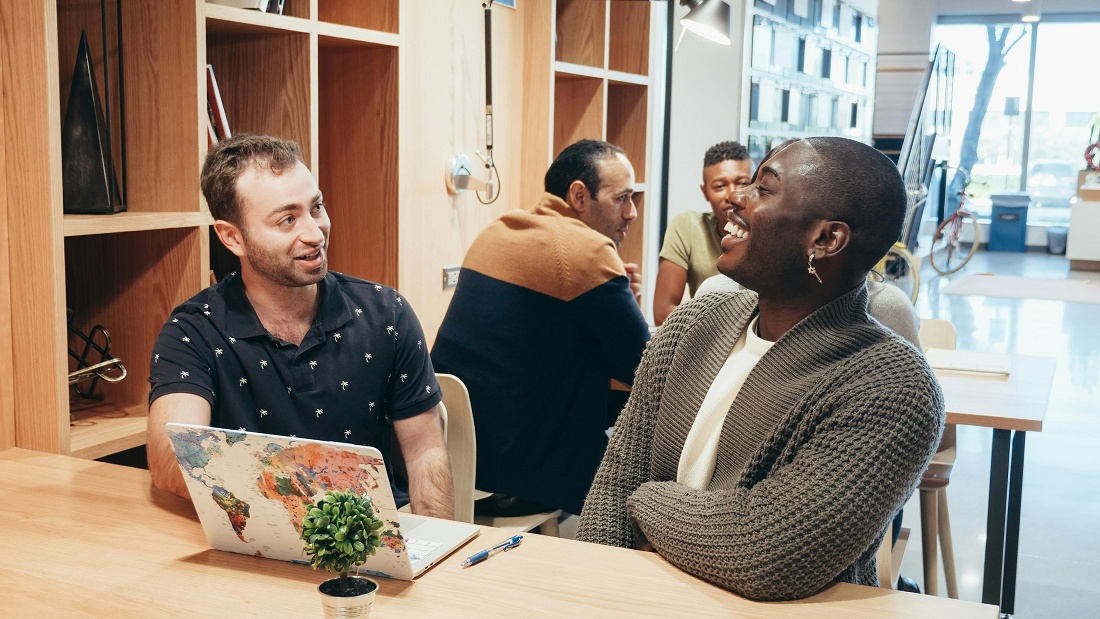
Virtual Offices
Virtual offices offer a registered business address and administrative support, such as call handling and postal collection, without the physical office space. This is a great example of where “office” and “office space” would not be used interchangeably, as a virtual office is not a physical space.
Non-Standard Office Setups
As we’ve mentioned, an office is a concept, so it can be anywhere work is conducted. In recent years, with the rise of remote working, we’ve seen a surge in home offices, garden offices and even kitchen setups.

These “non-standard” office setups are excellent for convenience and cost savings, but also come with challenges. Distractions, unreliable technology and a lack of meeting rooms can make it hard to work from these offices.
Many of our clients looking for their first serviced office space are transitioning from working in a non-standard setup to a professional office.
Key Features and Layouts of Modern Offices
Modern offices are more than just desks and chairs. They have developed to support a variety of working styles and to enhance employee productivity and morale.
Key features of the modern office space include:
• Onsite amenities – Spaces for employees to relax, socialise or hold informal meetings. Some business centres that we market even have games rooms, gyms and onsite cafes.
• Private meeting rooms – Essential for team discussions, hosting clients and conference calls. Video conferencing equipment and interactive whiteboards are now the norm in most meeting rooms.
• Phone booths – Perfect for private calls or remote meetings, especially in coworking spaces or noisy environments.
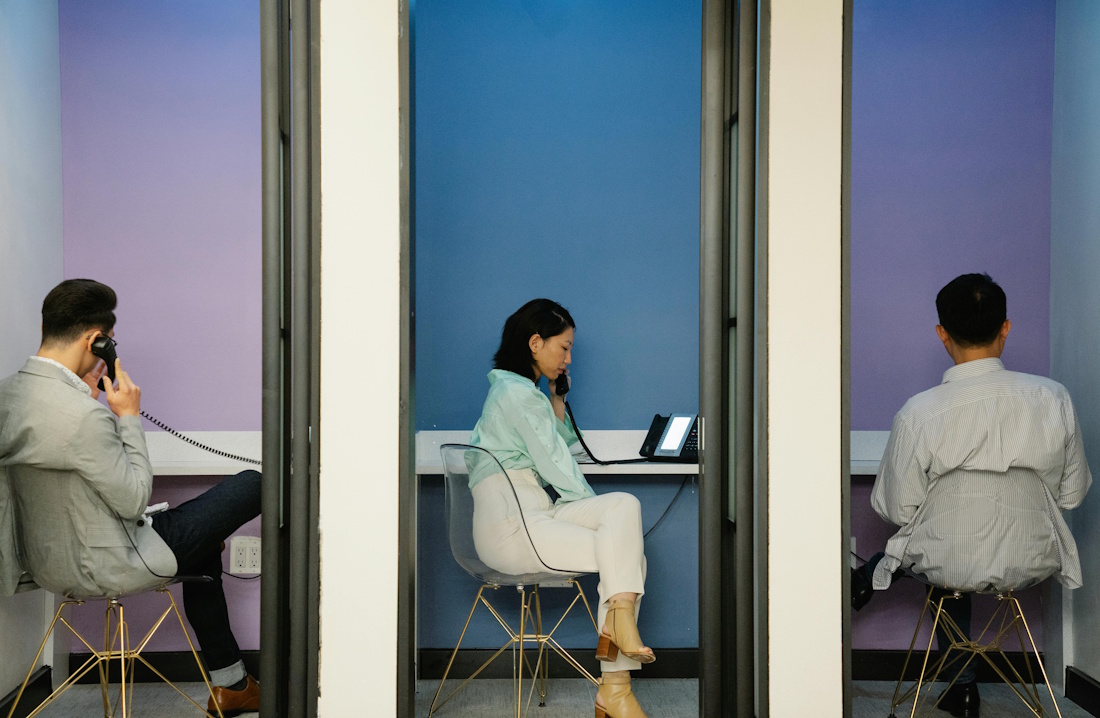
• High-speed internet – Reliable internet is non-negotiable in today’s world, so most offices are fitted with super-fast broadband. In a serviced office, connectivity is managed by the provider, and the price is included in the monthly cost.
• Natural light – Gone are the days of dark, cramped workspaces. Most modern offices boast large windows and natural light.
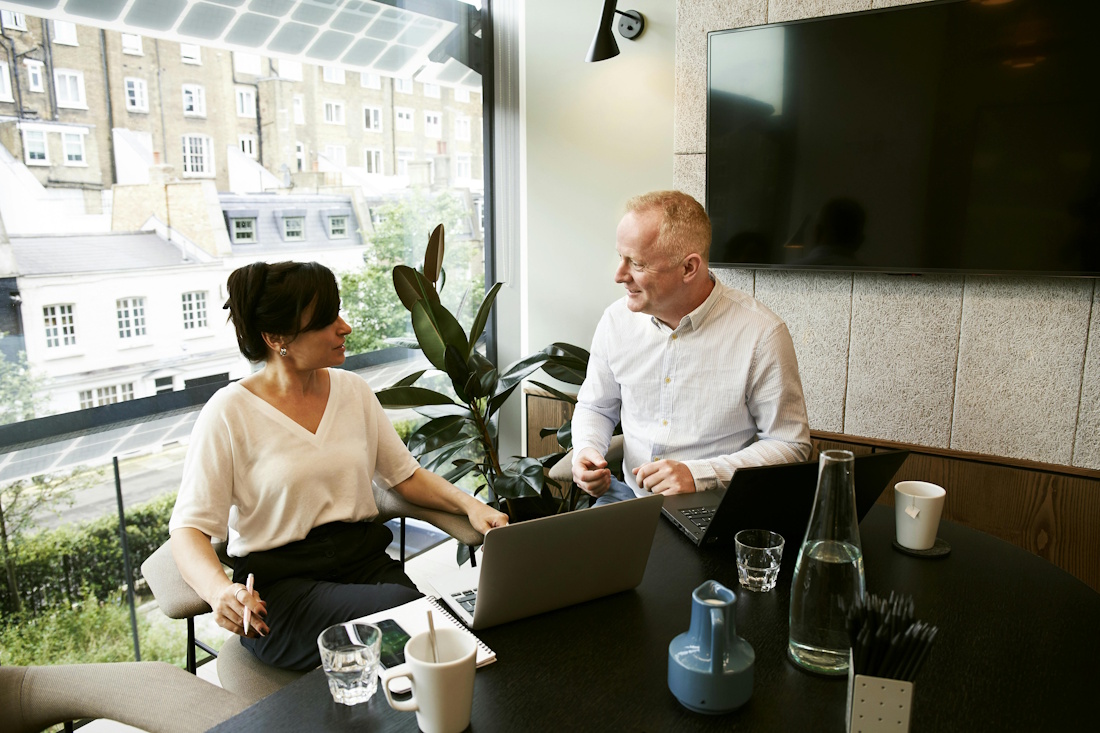
• Ergonomic furniture – A key to improving employee wellbeing is ergonomic furniture, which includes adjustable desks and chairs and flexible layouts.
• Sustainability features – Modern offices provide energy-efficient lighting, recycling points and green certifications. If you’d like to explore the benefits of renting space in a sustainable building, we have compiled an in-depth list.
Modern offices can be laid out in any of the following ways:
• Traditional layouts – Desks or cubicles in an open-plan space with adjacent, small private offices for senior management and executives.
• Open-plan layouts – These layouts remove partitions within the office space to boost communication and collaboration.
• Cellular layouts – A cellular layout offers a private office for each employee with no shared spaces.
• Activity-based layouts – These offer a variety of zones (e.g. quiet spaces, collaboration areas and meeting rooms) so employees can choose where to work depending on their tasks.
• Hybrid/Bespoke layouts – Layouts are not a one-size-fits-all, so in some cases, companies may mix elements of different layouts to create a bespoke fit-out.
We’ve also written a comprehensive article discussing the pros and cons of each type of layout in more detail.
Why Offices Still Matter in a Hybrid Working Model
Some businesses with a hybrid working model wrongly assume the office space they rent shouldn’t matter, as it’s only used for a few days.
In our experience, many organisations use their office space to create a company culture, host team meetings, and for training. Therefore, it's not necessarily how often you use the office space, it's about having the right space available when needed.

Serviced offices are a fantastic option for hybrid models, as they offer a host of amenities onsite, such as meeting rooms and event space. The contracts are also flexible, allowing businesses to scale their space up or down.
In addition, serviced spaces are run and maintained by a provider, meaning that companies don’t need to worry about maintaining a space that is only used a few days a week.
How to Choose the Right Office for Your Business
Choosing the right office for your business can feel very daunting, but this is where we come in. We’ve helped thousands of clients find their perfect office to rent to fit their budget, size and location requirements.
We recommend considering the following, but if there is anything you’re unsure about, we can help.
• Location – Where do you want your business to be based? Is it accessible to your employees and clients?
• Size – How much space do you need? If you have a hybrid working setup, do you need a desk for each employee, or can they share?
• Budget – Serviced offices are priced at an all-inclusive rate, making it easier to budget, but how much are you willing to spend each month? Can your budget be flexible?
• Amenities – Do you need a dedicated meeting room or executive office? Does anyone require on-site parking?
Who Uses Offices in London?
We’ve worked with a variety of organisations to find office space in London, from solo entrepreneurs to global corporations. London offers a central base with fantastic transport links, and we’re seeing a growing number of international businesses setting up headquarters in the capital.
Here are a few examples of how different industries tend to choose specific London areas:
• Tech companies - Areas like Old Street and Shoreditch are popular with tech companies because they offer a trendy and creative atmosphere.
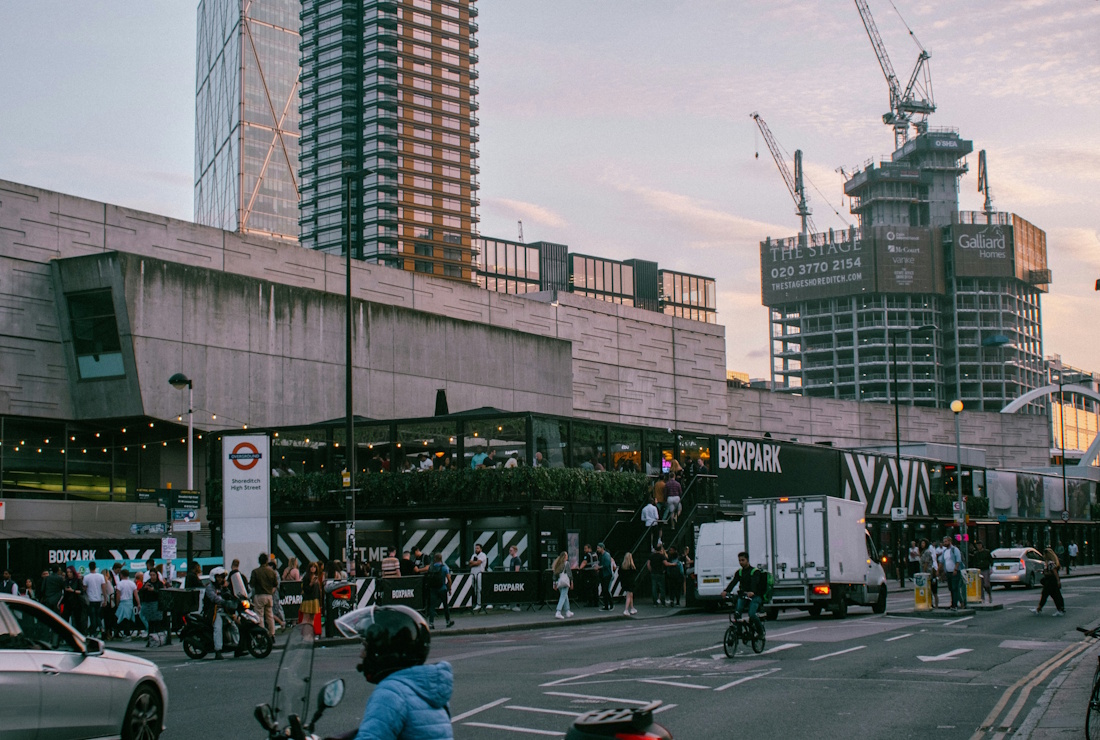
• Media and advertising agencies – These companies opt for workspaces in Soho due to its hustle and bustle and cultural vibrancy.
• Finance and law firms – The City and Canary Wharf are typically where finance and law firms choose office space. This ensures they are close to other similar businesses.
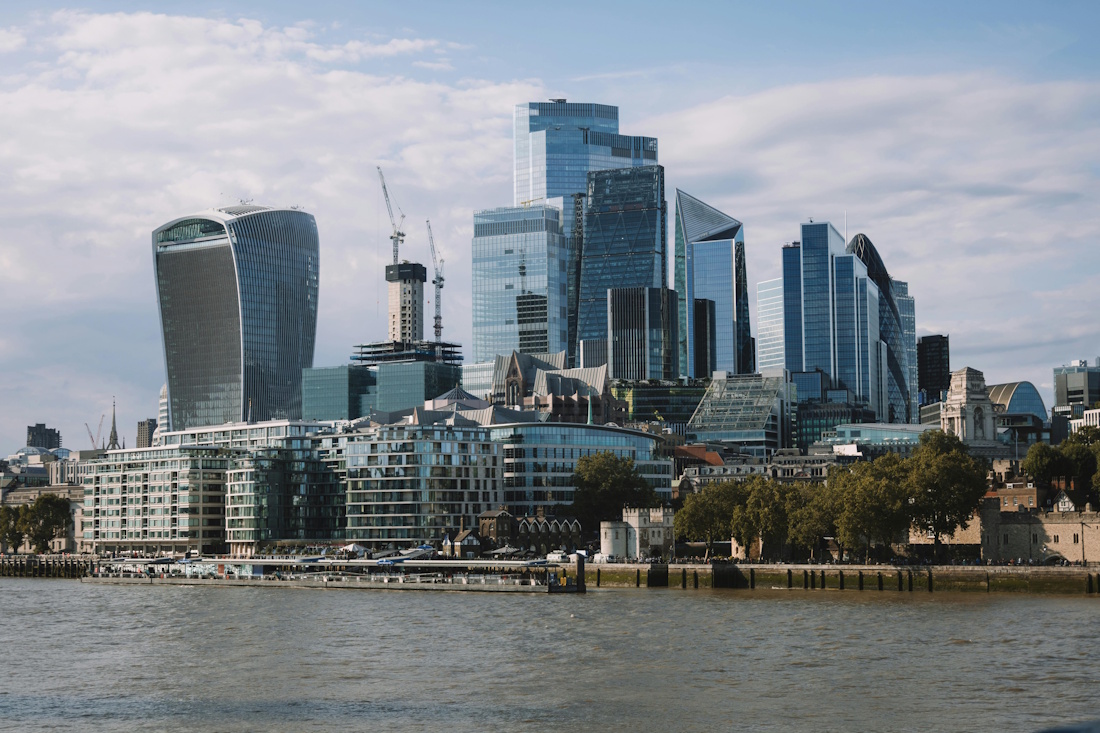
• Charities – Offices in Islington and Vauxhall are popular with charities, due to their cost-effective options.
Serviced Offices in London: A Growing Trend
Serviced offices have grown significantly in the past few years, especially in areas like Mayfair, King’s Cross and Holborn. We’ve seen a greater demand for these spaces due to their flexibility, which is ideal for businesses embracing hybrid working and rapid growth.
We’ve found that a key factor driving this trend is that serviced offices reduce the need for long-term contracts, making them perfect for startups and scale-ups with an uncertain future.
We also get a lot of enquiries from project-based teams and companies looking to test out the London market with a quick setup and move-in. For example, we helped Kier Construction find an office space in Euston for up to 30 desks for a short-term project.
As offices evolve, the definition stays the same: a designated workspace for individuals or teams to perform business tasks. Whether you’re a startup or an established organisation, there is an office setup to suit you.




